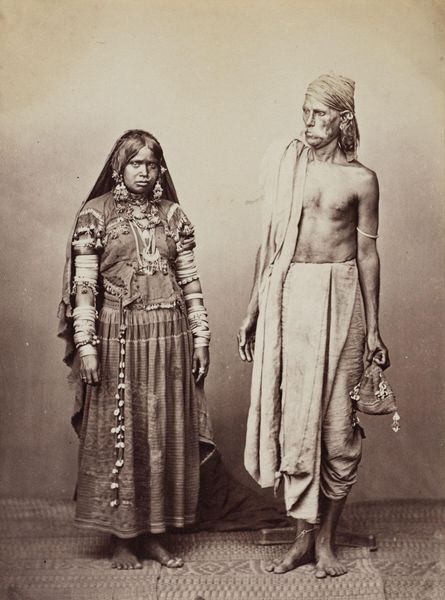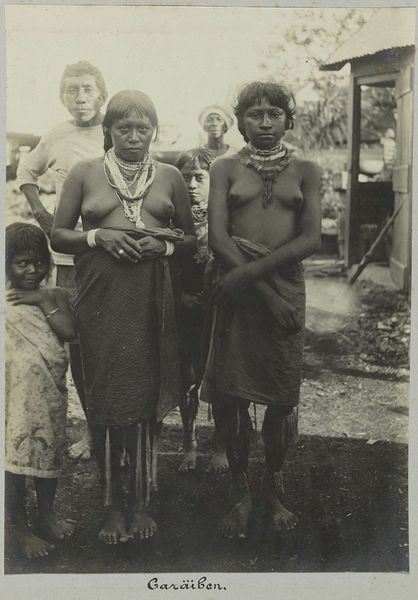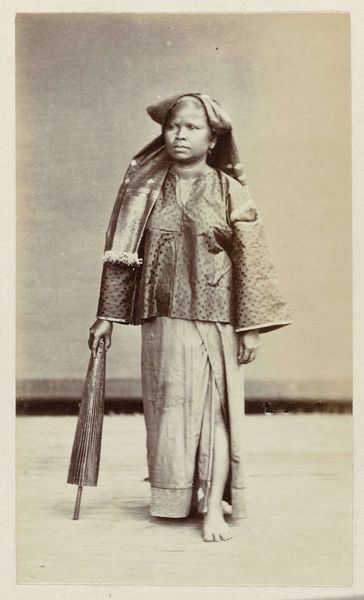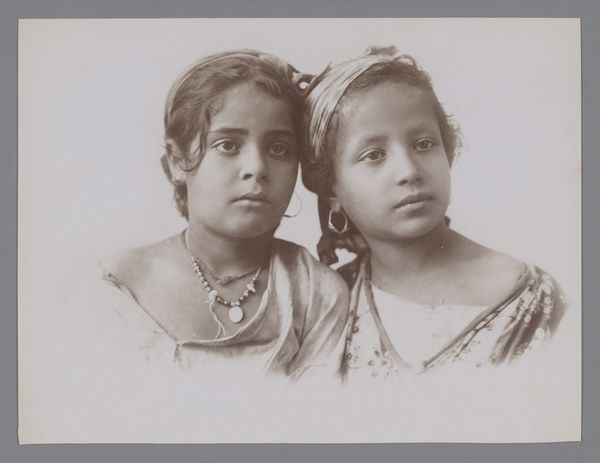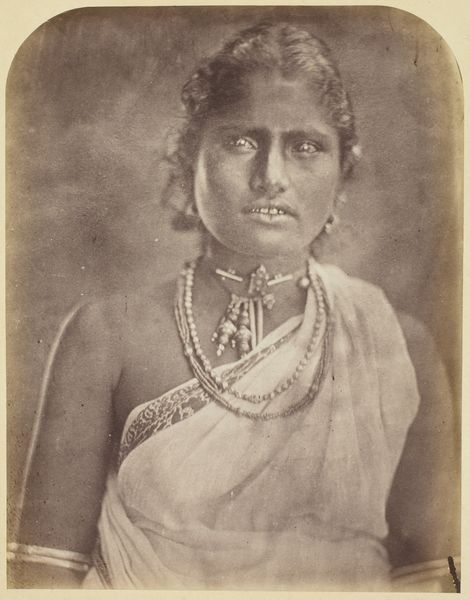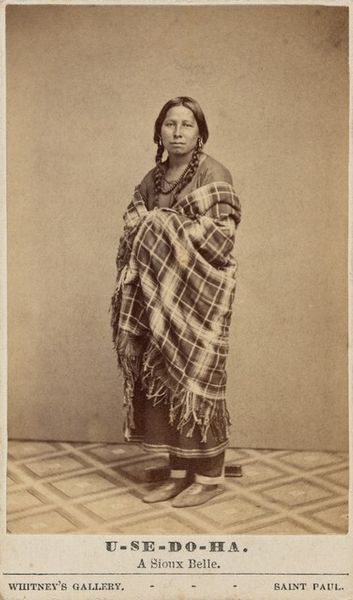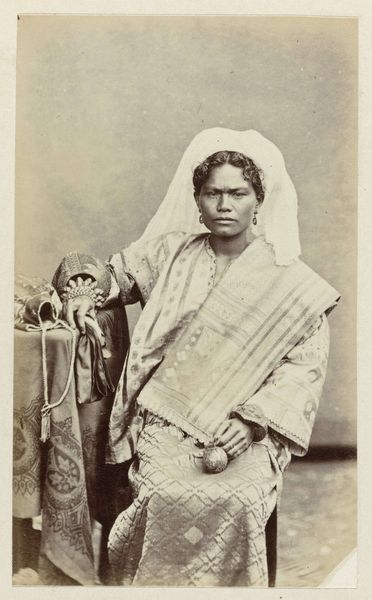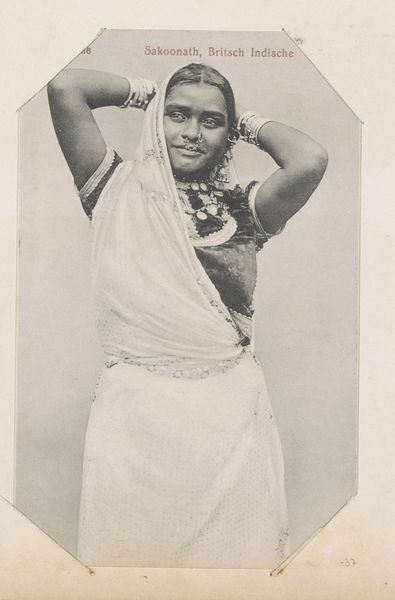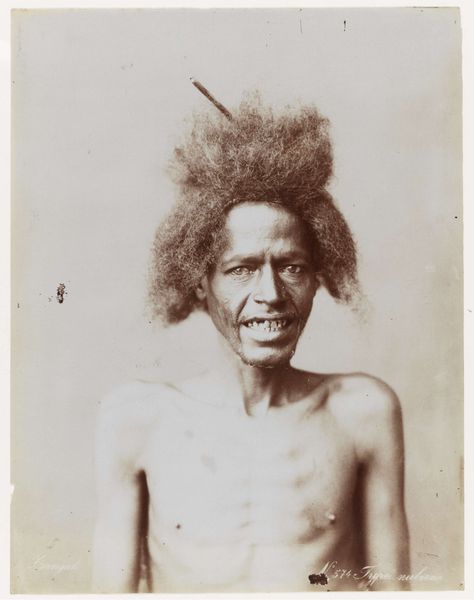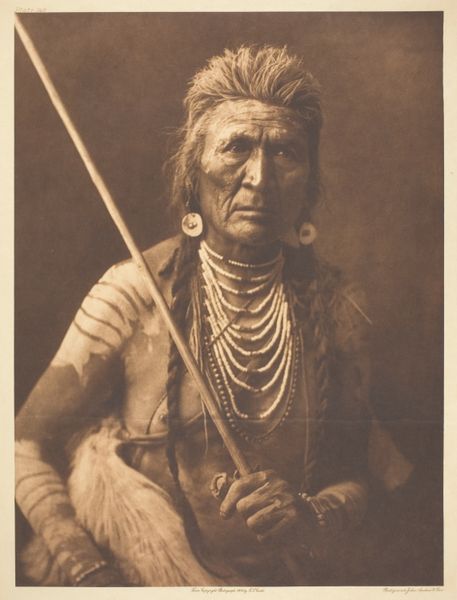
print, photography
#
portrait
# print
#
photography
#
historical photography
#
orientalism
Dimensions: 25.6 × 22.7 cm (image/paper); 44.2 × 35.6 cm (mount)
Copyright: Public Domain
Curator: Looking at this fascinating silver print, I am struck by the palpable weight of the water pot carried by one of the young women depicted. The piece, "Untitled (Ceylon)" was produced by Julia Margaret Cameron between 1875 and 1879. Editor: There's a vulnerability that immediately grabs me; an intimate yet almost intrusive glimpse into their lives, enhanced by the soft focus characteristic of Cameron's portraits. Curator: That vulnerability is really Cameron’s technique and privilege laid bare. As a portraitist, especially of powerful men in England, she then applied her style to young Ceylonese women. What are the ethics involved when the act of portraiture flattens their social existence to photographic effects and tropes of the exotic East? Editor: That's a crucial point. How was Cameron leveraging the very visual language of Orientalism, playing with notions of the 'exotic' to further cement existing social hierarchies through her art? What was their role, their labor, in this exchange of representation? It prompts questioning not just the artist's intentions, but also the viewers’ preconceived ideas and expectations of such imagery within its period. Curator: Indeed, especially as Cameron actively suppressed details and embraced artistic effects, obscuring clarity to elevate mood, prioritizing impression above precise documentation, further muddying the lines between staged presentation and genuine representation of her subjects' reality. The subjects, bearing the tools for gathering water, are further proof that what we see is an idea about life. We miss so much real context. Editor: Still, there’s an arresting power here, in their gazes and stillness. We should reflect on our contemporary engagement with the image. Are we furthering the colonial gaze, or critically re-evaluating historical frameworks and legacies of art production itself? Curator: Agreed. By critically exploring its historical production and the artistic choices within, and by decentering its maker, the photograph yields significant questions that can help expand our social and material understanding of 19th-century photography and portraiture today.
Comments
No comments
Be the first to comment and join the conversation on the ultimate creative platform.

